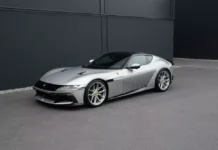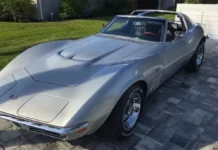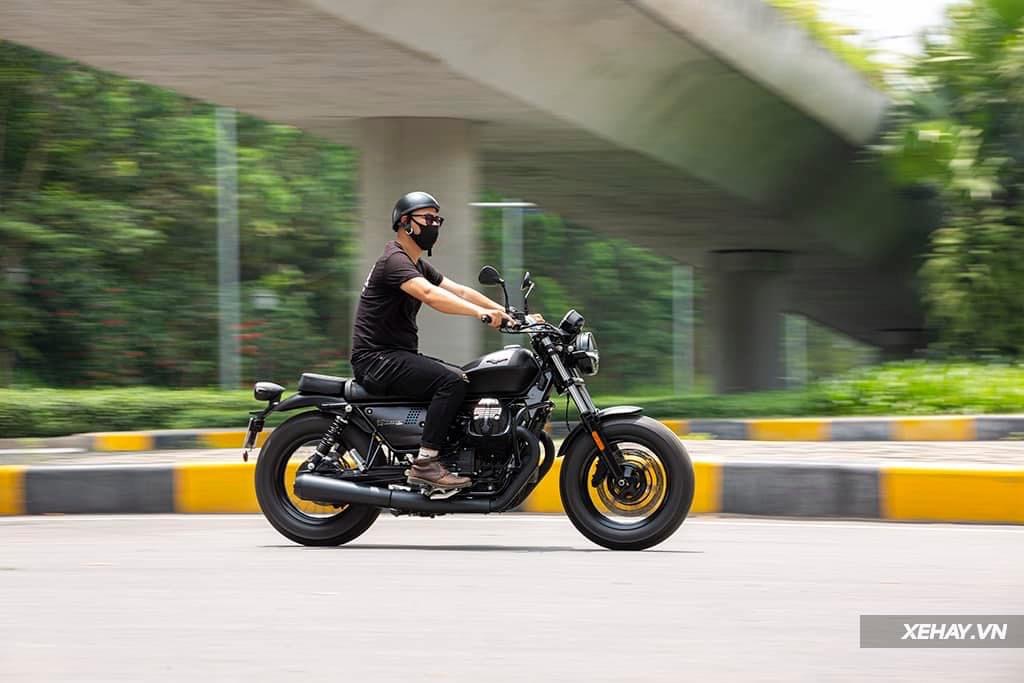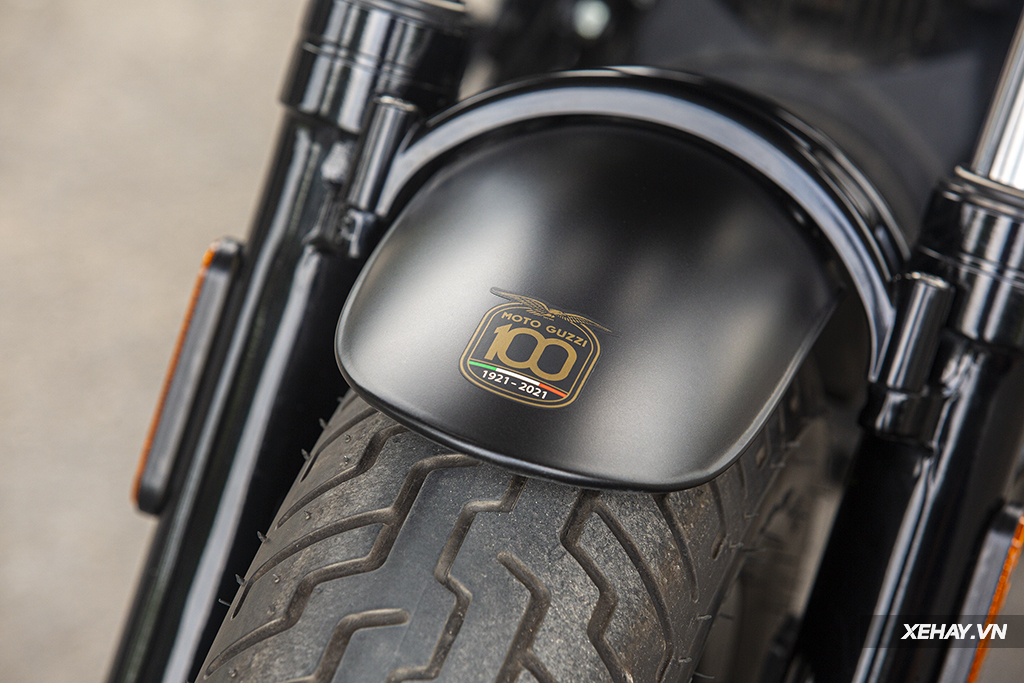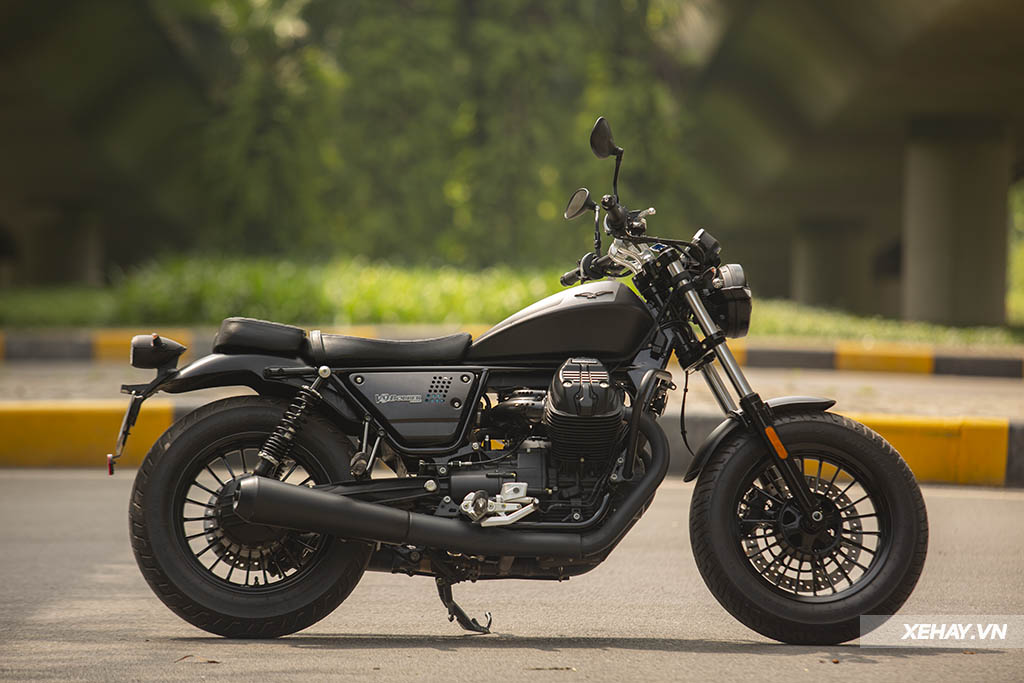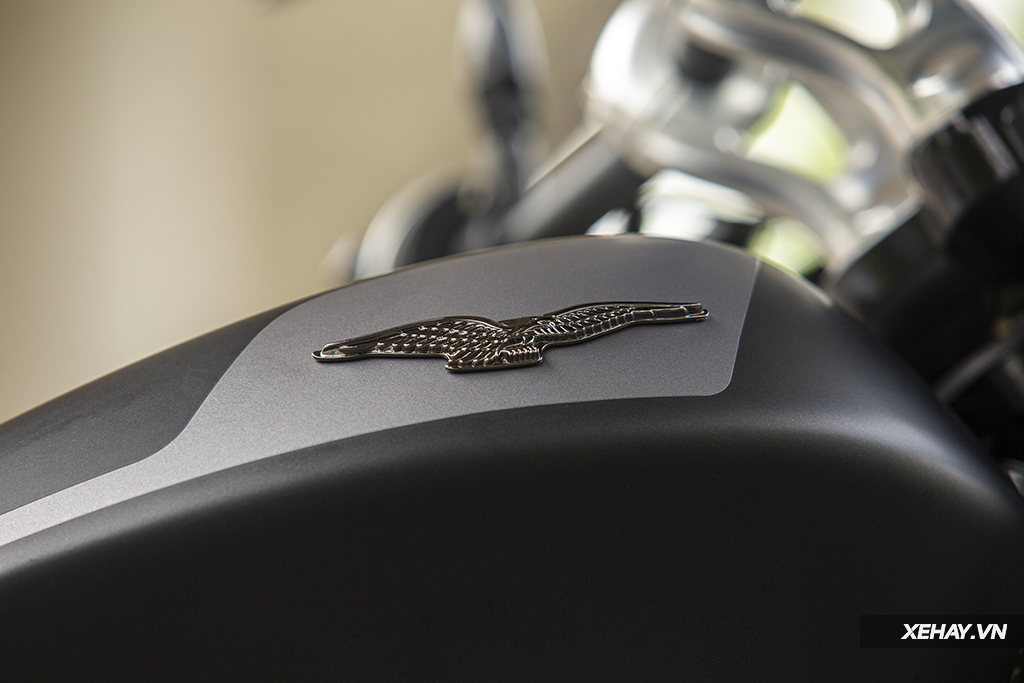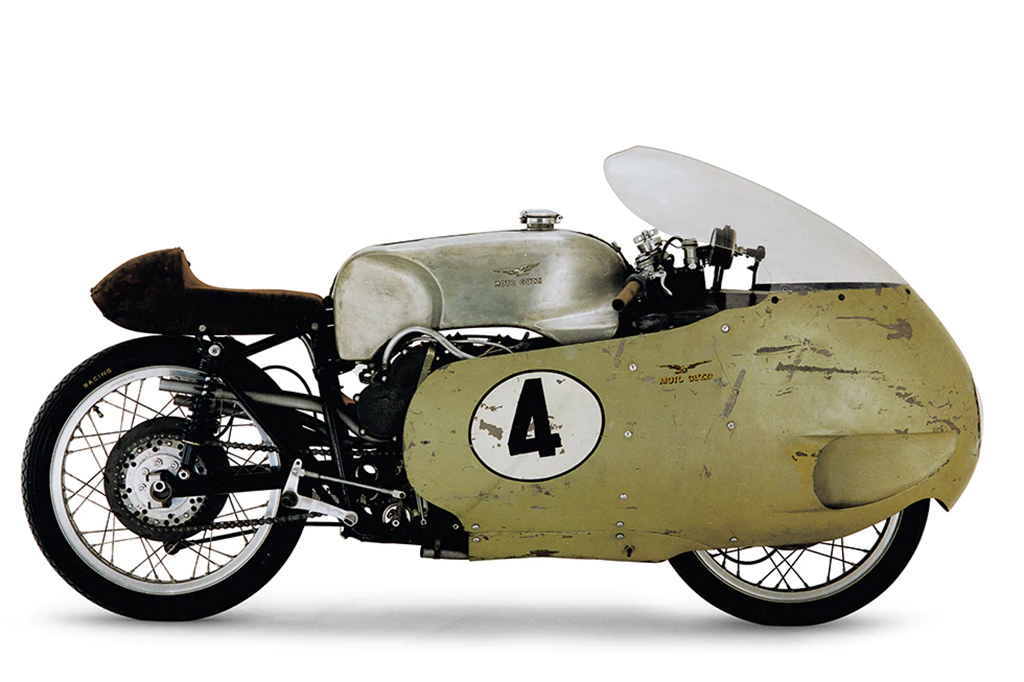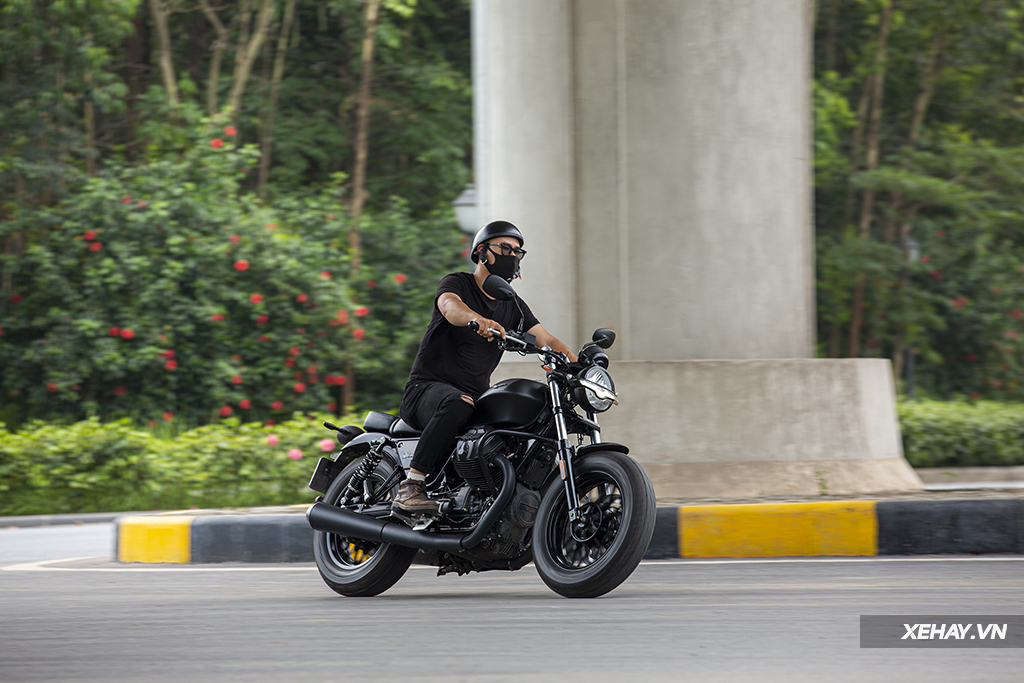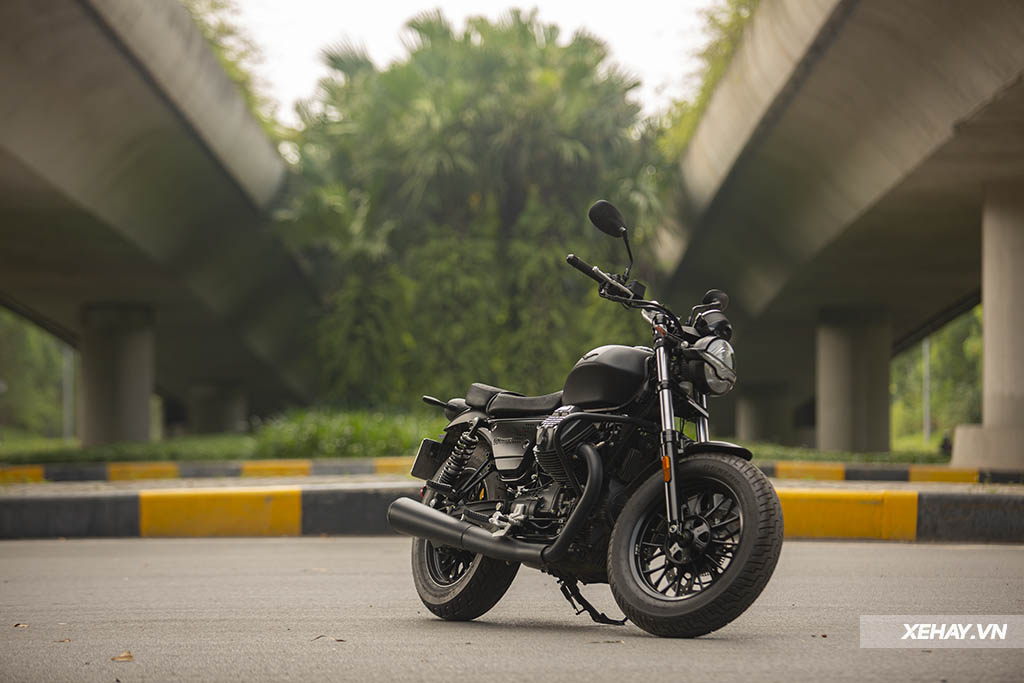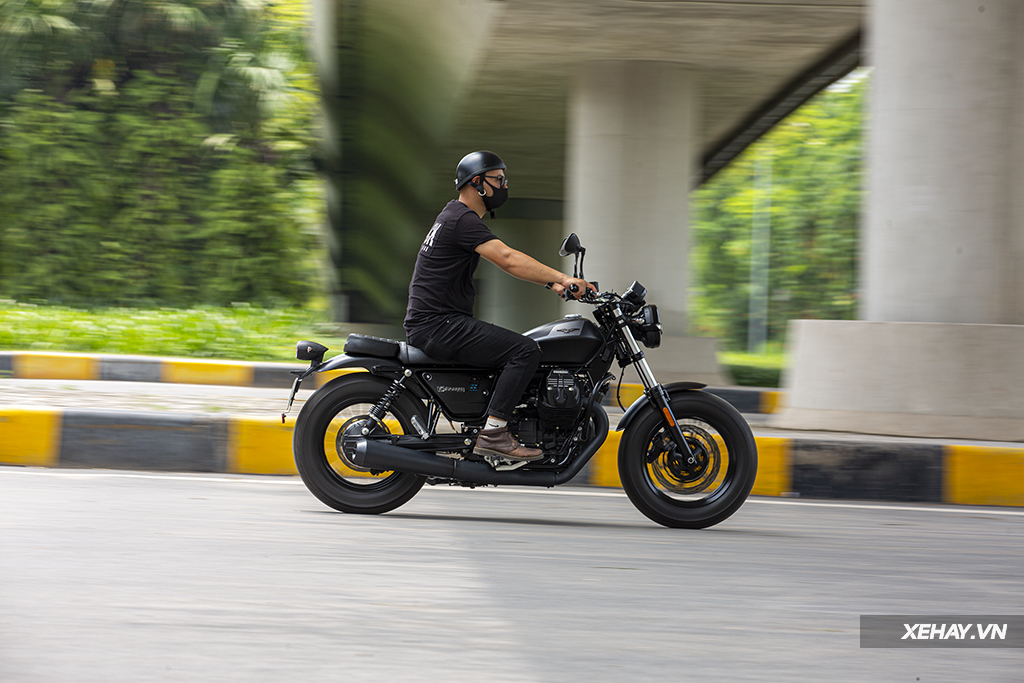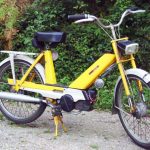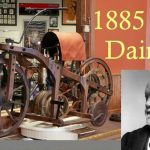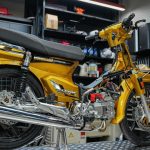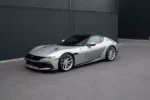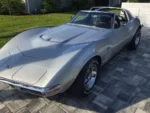The Moto Guzzi V9 Bobber offers motorcycle enthusiasts a full taste of “addiction”: a brand with a rich historical background, a captivating classic design, a 90-degree V-engine, and an easy-to-ride experience.
Moto Guzzi – the embodiment of a free-spirited eagle soaring high.
Located right in the center of the front fender of this Italian motorcycle is an iconic eagle logo with its wings spread wide, accompanied by the visibly printed digits “100” as a reminder that riders are on a bike from the oldest brand in Europe.
It all began on March 15, 1921, when the Moto Guzzi brand was officially established in Genoa, a seaport city in Northwest Italy, under the name “Società Anonima Moto Guzzi”. But the idea of starting a motorcycle company had been brewing earlier, when a trio of friends, Giorgio Parodi, Giovanni Ravelli, and Carlo Guzzi, formed a squadron on the outskirts of Venice.
Giovanni Ravelli, a daring and courageous racer with the nickname “mad Italian,” had the intention of using his fame and talent to promote the brand through racing. Giorgio Parodi, the son of a wealthy local shipowner, provided the financial support needed for production. Carlo Guzzi, a mechanical worker responsible for aircraft engines, took charge of building the motorcycles.
However, just a few days before the end of World War I, tragedy struck as the Nieuport 11 aircraft piloted by Giovanni Ravelli unexpectedly crashed during a landing, leaving his dream of a motorcycle company unfinished.
To honor Giovanni Ravelli’s remarkable achievements, the Royal Italian Navy awarded him 3 silver star medals and a cross-shaped medal. In his memory, Giorgio Parodi and Carlo Guzzi decided to adopt the image of an eagle with its wings spread as the Moto Guzzi logo, paying tribute to the spirit of enduring freedom.
After the end of the war, Giorgio Parodi and Carlo Guzzi were discharged and immediately set out to realize their motorcycle dream. One lesser-known fact is that Moto Guzzi faced numerous challenges in its early days.
Back then, Carlo Guzzi didn’t even have his own mechanics’ workshop. Instead, he had to work as a “guest” in another workshop in the same village in order to produce the first motorcycle under the G.P. brand (short for the names of the two founders, Guzzi-Parodi). Later, the G.P. models were renamed Moto Guzzi because Giorgio Parodi didn’t want any potential confusion about the brand being associated with his family’s immense wealth.
Giovanni Ravelli’s departure led to all mechanical and technical problems falling solely on Carlo Guzzi’s shoulders. Although the brand name carried Carlo Guzzi’s name, he didn’t own any shares in Società Anonima Moto Guzzi. In fact, Carlo Guzzi’s remuneration was based on a copyright fee for each bike bearing his name that rolled off the production line. The brand was actually owned by Giorgio Parodi.
A portrait of the legendary Bialbero 350, which brought fame to Moto Guzzi with 9 consecutive world championships. – Photo: Moto Guzzi.
Looking back at the company’s first model, the Guzzi Normale, it truly made a splash in terms of technology compared to contemporaneous models. Carlo Guzzi’s design for the Guzzi Normale’s 4-valve single-cylinder engine was simple yet highly efficient when it came to cooling, far surpassing French Aleyon 1909 4-cylinder models or the 1914 Peugeot models with dual-cylinder twin camshafts.
Interestingly, Carlo Guzzi drew inspiration for this design from two popular military aircraft of the Royal Italian Air Force: the Fiat A10 and A12, both of which featured 4-valve single-cylinder engines. Incorporating other superior aerospace technologies, Carlo Guzzi applied them to his first motorcycle, including a small-end bearing design with a copper ring, a low compression ratio engine, a horizontal cylinder to reduce vibration, a one-piece engine-gearbox unit, and a forced lubrication oil pump instead of a hand pump.
Multiple championships… to the point of saturation
By investing in aviation technology, continually innovating and reinventing itself, Moto Guzzi consistently dominated speed races and has thrived for over a century with a series of breakthroughs, such as center stands for motorcycles, combined braking systems (CBS), automatic transmissions, and even being the first manufacturer to build a wind tunnel for research and development.
According to the official records of the Italian brand, the eagle logo appeared 3,329 times at the finish line in the first official races, including 14 world championships and 11 Tourist Trophy season cups.
If we estimate that Moto Guzzi wins an average of one race per day, then the Italian brand’s winning streak would have lasted for over 9 years! The golden age of Moto Guzzi on the speed tracks was the period of 1946-1967, with iconic models like the Gambalunga 500, Motoleggera (Guzzino), Gambalunghino, and Mandello…
The pinnacle came with the 8-cylinder engine, propelling Moto Guzzi into the “hall of fame” in racing, with a top speed of up to 275 km/h. Thanks to this monster heart, the unbeatable Guzzi 350 GP won every race until 1957, when the company decided to retire from racing after clinching 9 consecutive championships!
Since retiring from racing, Moto Guzzi has undergone changes, transitioning to producing a generation of V90 90-degree V-twin engines starting in 1965. Since then, the V90 twin-cylinder engine has been continuously refined, improved, and featured in various models, becoming a trademark whenever Moto Guzzi is mentioned.
Moto Guzzi is not only famous for its prowess on the race track but also for its reliability. In 1928, Giuseppe, Carlo Guzzi’s brother, embarked on an incredible adventure by riding a Moto Guzzi GT 500 motorcycle 6,000 km from Mandello, their hometown, all the way to the frigid North of Norway to test the bike’s performance in the extremely cold Arctic Circle climate, where the highest temperature reaches only 10 degrees Celsius.
Throughout its existence, Moto Guzzi has weathered many storms, sharing the same roof with Benelli and Maserati under De Tomaso, being fully owned by Bombardier, then returning to Ducati, prompting interest from Kymco for acquisition, and finally, celebrating its 100th anniversary under the roof of Piaggio. A century of existence has never been simple, yet Moto Guzzi continues to evolve while staying true to the enduring spirit of the spreading eagle.
Moto Guzzi V9 Bobber – Italian elegance in appearance and riding experience
In addition to the label adorning the front fender, the iconic eagle logo also appears on both sides of the leaf-shaped fuel tank and the LED position lights at the front of the bike, serving as a constant reminder of the brand’s historical roots and values embodied in the design of the V9 Bobber.
Although named “Bobber,” the riding posture of the Moto Guzzi V9 leans towards the classic style, featuring a low foot position without excessive forward reach. The bike boasts a classic Zero Drag handlebar with a comfortable height that keeps the rider’s posture upright, with arms stretched forward and wide, while the knees form right angles, parallel to the feet.
The advantage of a scooter-like riding posture is that it helps reduce fatigue, especially during long-distance rides. In city traffic, the relaxed riding position also proves to be remarkably comfortable.
Furthermore, the seat is designed with a unique split compartment, allowing the passenger seat to be removed and transforming the bike into a stylish single-seater street bike with a solo seat. With a height of only 808mm, this low-profile Moto Guzzi is even friendly to riders over 1.6m tall.
The suspension system, particularly the shock absorber, on this bike is solid, making any impact from speed bumps or potholes feel light and avoiding discomfort for the rider’s hips. Of course, the bike’s weight distribution is optimized when carrying two adults. The bike inspires confidence and offers easy control when leaning into corners, while also being maneuverable and able to navigate through narrow streets easily.
Another highlight of the V9 Bobber’s appearance is the pair of chunky tires fitted to the front and rear wheels. This duo complements the dual exhaust system on both sides beautifully. Additionally, the main lighting elements, brake lights, and speedometer are all elegantly designed in a rounded shape, bestowing a classy, classic, and eye-catching aesthetic.
The entire body is matte black, evoking a distinctly masculine vibe. The steel frame structure is exposed and adorned with CNC-milled metal covers that look striking and testify to Moto Guzzi’s excellence in craftsmanship.
Of course, the most notable area of the V9 Bobber is the 90-degree V-twin engine with a 2-cylinder configuration and an 853 cc capacity, utilizing air cooling. The horizontally arranged 90-degree V-twin engine, with those symmetrical cylinders, is a hallmark of Moto Guzzi motorcycles that the Italian brand has proudly preserved since 1967.
In terms of design, the horizontally arranged 90-degree V-twin engine offers a distinct feel compared to motorcycles equipped with vertically arranged V engines from notable brands like Harley Davidson, Triumph, or Honda.
Another advantage of the horizontally arranged engine design is that Moto Guzzi motorcycles can be air-cooled while still ensuring optimal engine heat dissipation, relieving the need for liquid cooling systems like those found on other high-displacement motorcycles.
The two engine blocks jutting out on both sides of the bike add to the Bobber’s assertive look. When the bike is started, the V-twin engine of the Moto Guzzi V9 Bobber immediately provides a vibrating sensation that motorcycle enthusiasts and vintage bike aficionados find irresistibly captivating. This distinct characteristic is shared among motorcycles with horizontally arranged V engines, or Boxer engines.
This vibration quality creates an addictive emotional touch that captures the hearts of riders. The original dual exhaust system on the bike contributes to a smooth riding experience, delivering a comfortable, deep, and warm sound. This is a charming attribute of standard mufflers on large-displacement motorcycles.
However, with a slight twist of the throttle, the initial vibration dissipates, replaced by an indescribable sense of nostalgia and tranquility that stands in stark contrast to the smoothness of modern sport motorcycles.
Furthermore, the relaxed and gentle riding sensation offered by the Moto Guzzi V9 Bobber also ensures peace of mind and safety for riders due to a range of modern support technologies, including a 2-channel ABS system featuring Brembo brakes at the front and rear, MGCT driving mode equipped with traction control capability, electronic fuel injection for fuel efficiency, and a mechanical throttle and lever system that helps preserve the nostalgic sense of speed.
Anh Phan

